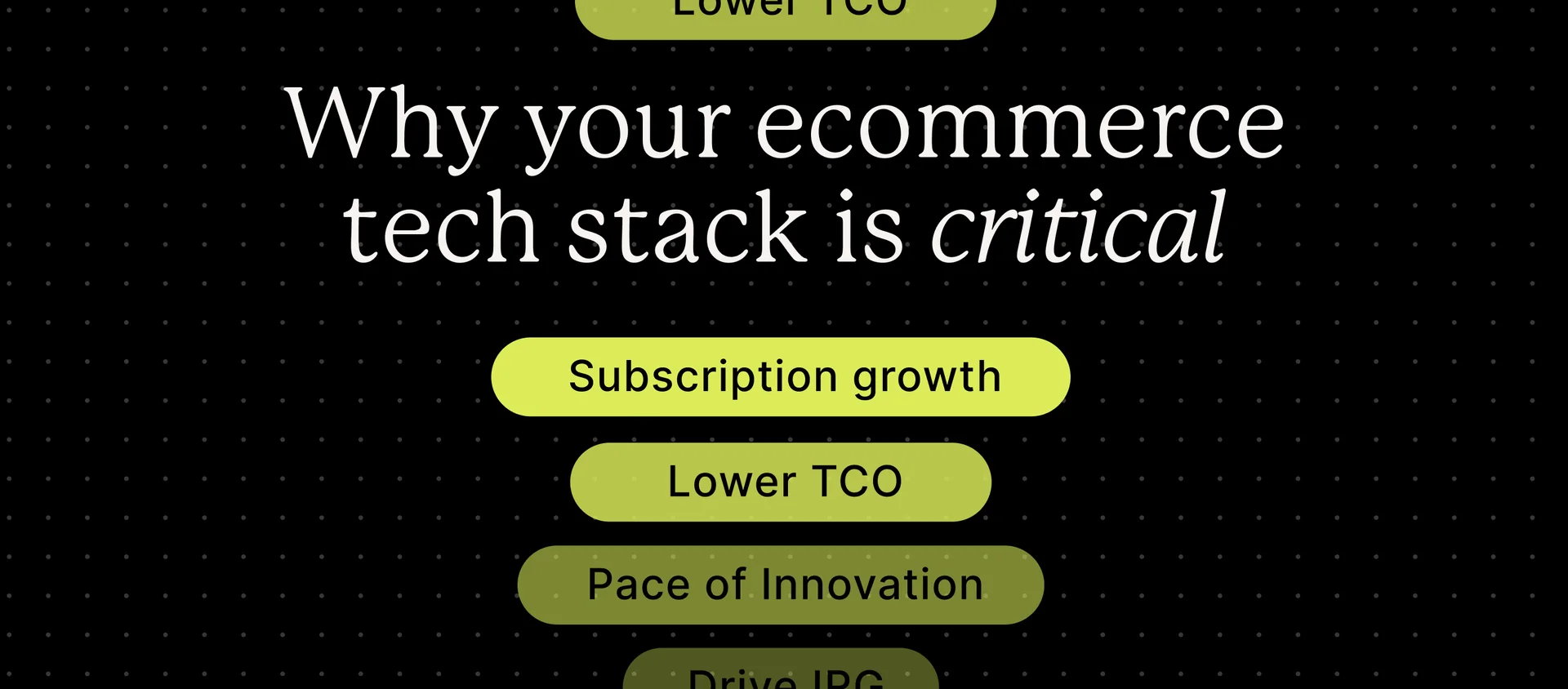If your online store is where you meet your customers, your About Us page is where your customers meet you.
This is where you tell your brand story, why you started your business, who you are as founders, and what you care about.
Using nine different brands from a range of different product verticals, let’s look at the ways businesses can craft beautiful and value-focused About Us pages that drive conversions (as well as retention) by connecting with their target audience over shared company values.
Here are the nine merchant About Us pages we’ll be featuring:
We’ll break down the best practices that these About Us pages follow and share tips along the way for how you can craft a page of your own. Ultimately, this will help you attract the right website visitors to your business and boost your brand affinity.
Key takeaways
- Use your About Us page to connect with new customers over shared core values by outlining what your business cares about and what your brand mission statement is.
- Share pictures of your founders and humanize the brand by telling the company story in a succinct and captivating way.
- Showcase the organizations or charities that your business partners with that align with your brand values.
Your company’s mission: What do you stand for?
So, where do you start when you’re trying to craft the perfect About Us page? It’s simple—you start with your “why.” Why was your business founded? What problem were you trying to solve for your customers? Why did you decide to buck the status quo?
Narrow down the answer to this “why” question to its most succinct possible form—that’s your mission statement. Think of this like your most concise value proposition that you’ll display at the top of your About Us page so that customers can instantly see what your brand stands for.
Let’s take a look at some mission statement examples from the About Us pages of our featured merchants for inspiration.
Crossrope: “We believe everyone deserves a fun and accessible workout. We are on a mission to inspire millions of people to experience a different way to get fit through jump rope fitness.”
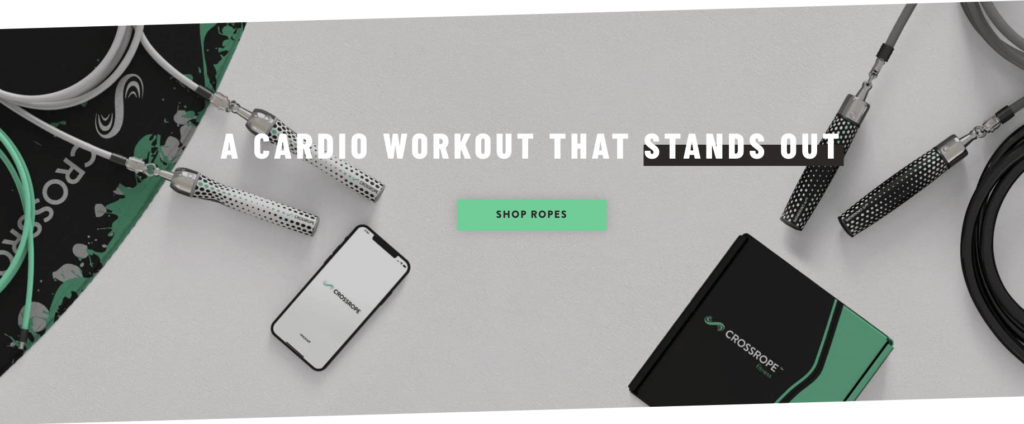
Pipette: “We believe that biotechnology has the power to change the world. That’s why our scientists devote their energy to creating effective, safe skincare that doesn’t harm the environment or animals — because our babies and our earth deserve better.”
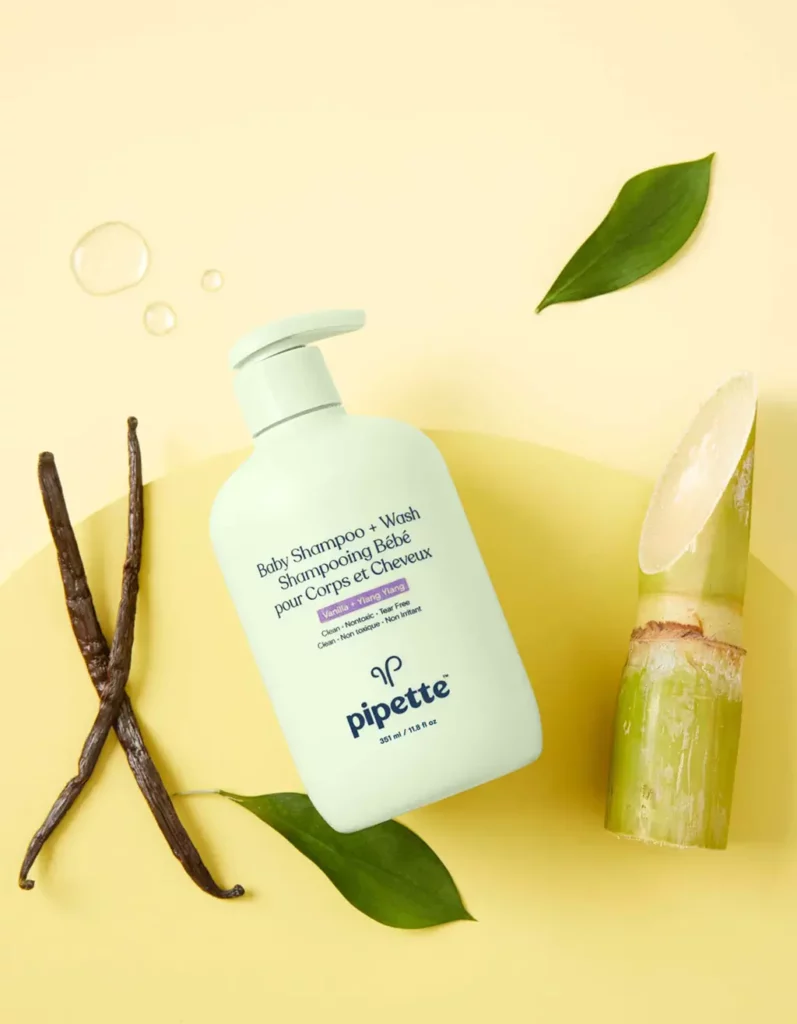
Pomegranate: “We believe in the power of art and information to positively impact the world. Access to art and knowledge expands your mind, builds community, and enhances your life.”

Through sheer coincidence, each of these begins with “We believe…”
That’s not a requirement for a mission statement, but it’s a great prompt to use if you’re feeling unsure how to start your own.
A few tips for creating a solid brand statement: It’s important to not go into too much detail here. Think of this as a well-crafted elevator pitch that you’d share with a stranger when they ask what your business does. It should be obvious what your brand produces as a product while using emotionally evocative language (notice the use of “inspire,” “positively impact,” “devote,” and “deserve” in the above mission statements).
You want a potential customer to read the statement and be drawn in to knowing more about your brand. They should be eager to scroll down the About page to discover more about who created your brand and what core values you identify with.
Create intrigue, be honest, and be succinct.
Weave a brand story—don’t share your company’s history
Often, another title for an About Us page can be “Our Story.” Whichever title you use, it’s important to include a section outlining the story of how your brand came to be. The focus here is on the word story. This is not a detailed history of your company’s inception. This isn’t the 25 slide business plan you created. This is a curated story about why you or your company’s founders decided to take the leap all entrepreneurs do: create a company.
Your founding story should dive into more detail behind your company’s why.
Let’s take a look at a few examples from some more of our merchants.
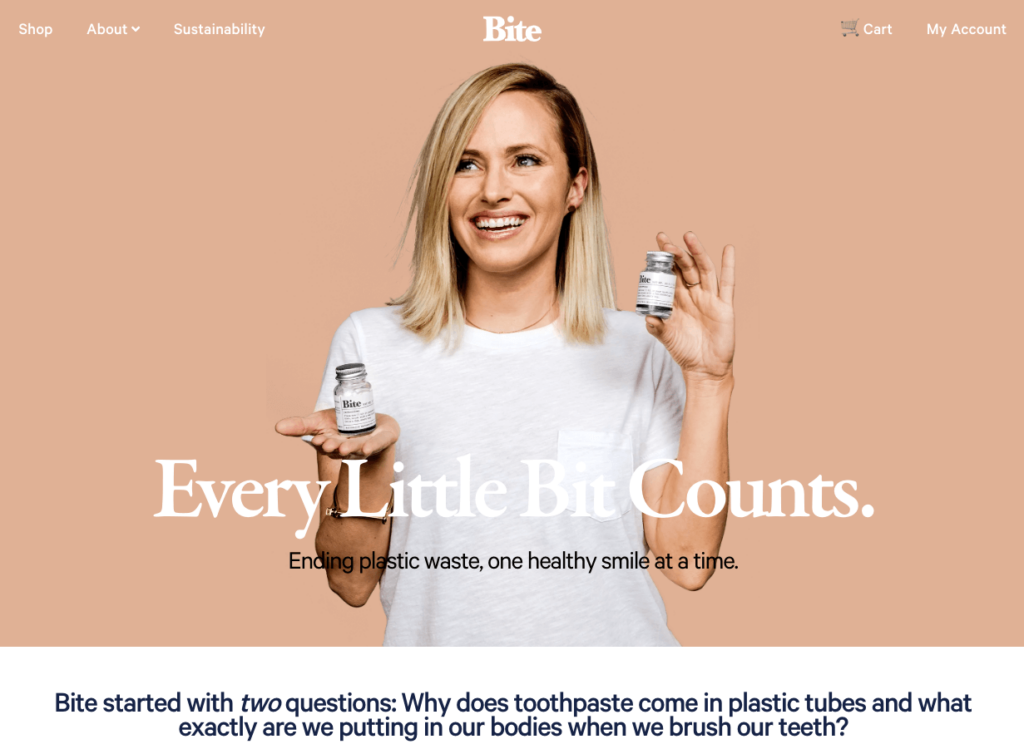
Bite’s About Us page does an incredible job right off the top. They share a polished video of the founder telling their personal story of why they started the company.
Through the video and the entire page, we uncover the story of why Founder and CEO Lindsay McCormick created the company. Lindsay was traveling for work and noticing how many small toothpaste tubes she used. Frustrated at how wasteful it was, she did some research and discovered that over a billion toothpaste tubes end up in landfills every year. She started looking for a sustainable alternative, but couldn’t find one that was plastic free and used ingredients she could trust—so she created her own.
A quick note: Bite’s “Our Story” video is beautiful and well produced, but don’t be intimidated that you won’t be able to match that level of quality to connect with customers. You don’t have to hire a video production company to achieve the same authenticity and connect with your customers.
Instead, use what you have—even recording a short video on your phone—that is well lit and has clear audio featuring someone on your brand’s leadership team who can share why your brand was created. Video is a great way to connect more viscerally with customers than a wall of text.
Share the faces (and voices) of your brand
Another great example of a well crafted “Our Story” comes from Five Marys Farms, sellers of ranch raised meats.
On their About Us page, they share Mary’s story of the many businesses she founded before starting a ranch with her husband Brian (and their four daughters named Mary). The story is so effective because it’s written in the first person and contains a multitude of pictures of Mary and her family, connecting customers with the faces behind the brand.

And yes, you read that correctly, all the daughter’s first names are Mary (after strong and memorable grandmothers and aunts on both sides of the family) but they go by nicknames based on their middle names.
We can’t stress how effective it is to use an About Us page like this when you’re selling something like food, because of how important it is for the brand to establish trust and credibility with their customers.
Here’s another About Us page example from Blume which showcases their co-founders, sisters Taran and Bunny Ghatrora.
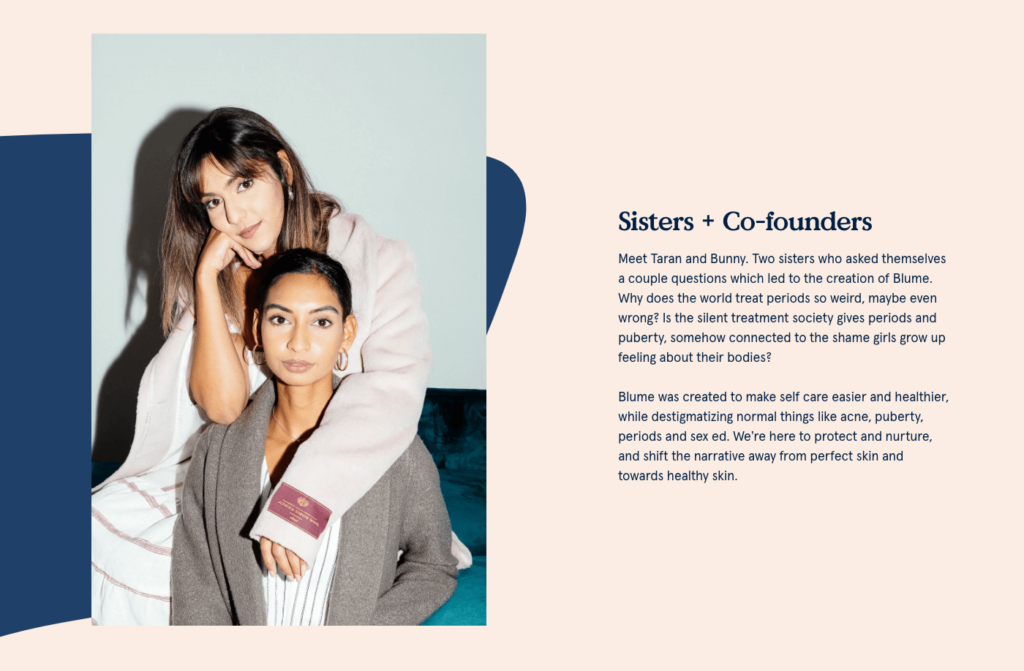
It’s hard to quantify this, but consider putting faces behind the brand as a subliminal retention strategy. It’s easy to stop buying from a faceless logo, but it’s hard to stop doing business with people you recognize and connect with.
You’ve read about Bunny and Taran starting their women’s selfcare brand because they learned that 60% of women can pinpoint that their self-esteem plummeted when they went through puberty—and their mission is to change that. You want to help them on that journey to create a safe space for future generations.
Or you loved the vibrant photos of Mary, her husband, and their five daughters working on their ranch. You’ve read about how Mary was inspired by her entrepreneurial grandfather and see how she’s sharing that spark with her family.
When you establish these connections and form these kinds of relationships with your customers, it’s a lot harder for them to churn when they know the people behind the brand.
In your own words
Here’s a tip for crafting an effective “Our Story” section on the About Us page. Using a third-person perspective when talking about the brand can be effective, but combining it with a dedicated section written from the founder’s first-person perspective is where the real connection lies.
Here are some examples from our featured merchants.
On Crossrope’s About Us page, they share an interactive timeline complete with pictures and third-person descriptions about their founder discovering weighted jump ropes for the first time at a military gym while deployed in Djibouti. That third-person perspective continues throughout the timeline but beneath it is a prominent quote written in first person from Dave himself explaining why he started the company:
“During my naval career, I developed a passion for jump rope fitness that inspired Crossrope.
To this day, Crossrope is still my primary fitness routine. Our amazing team is driven to bring the joy of jump rope fitness to all!”
Dave Hunt, Crossrope Founder
Similarly on Bite’s About Us page, there is a signed letter from CEO and Founder Lindsay McCormick outlining why they started the brand.
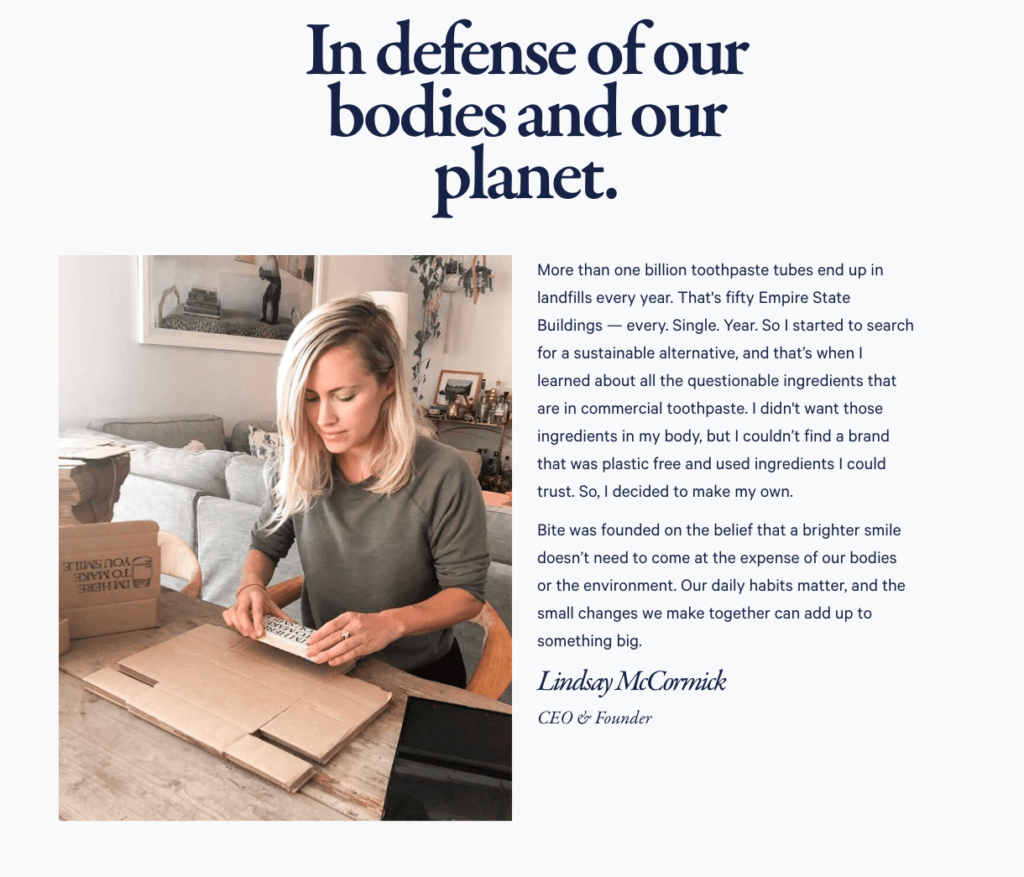
Show, don’t tell, potential customers
Attention spans are short these days. So do everything you can to make the readability on your About Us page as pleasant (and scannable) as possible. Use bold photos, illustrations, symbols, videos, badges—whatever visual imagery you can use to convey different aspects of your brand.
On NakedPoppy’s About Us page they use a custom graphic designed in their brand colors to show the difference between the clean, vetted ingredients they use versus what other personal care brands use.
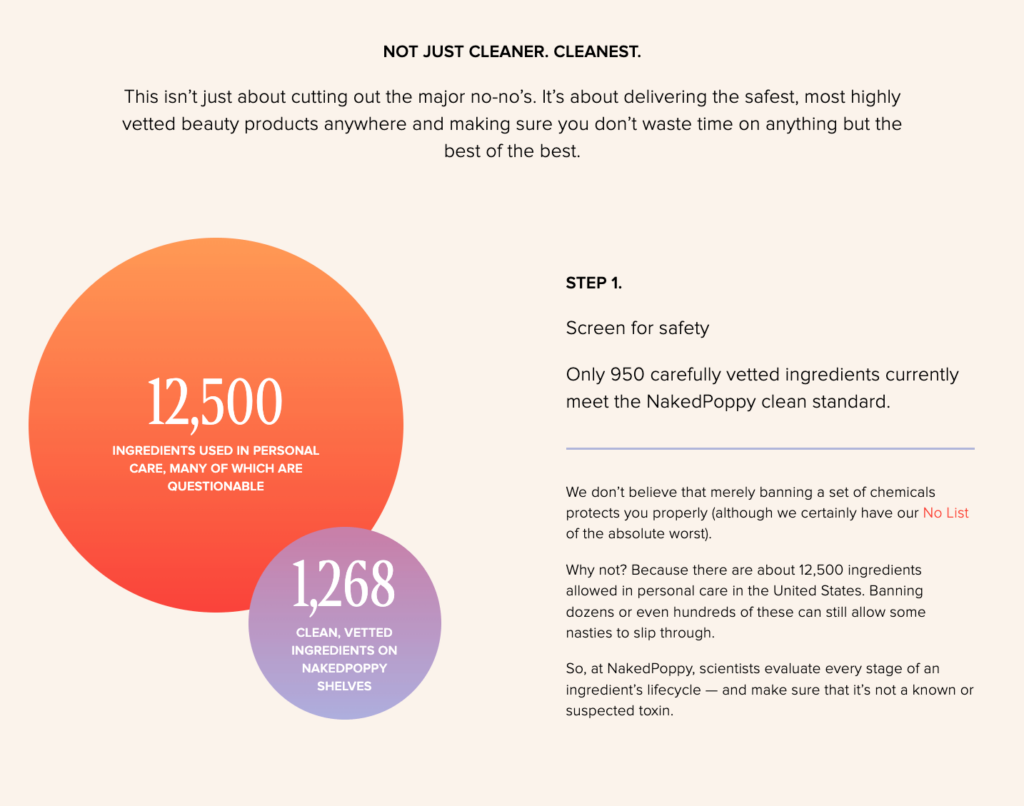
Showcasing the difference between these numbers is way more effective as a graphic (and more digestible as a reader) than it would be to just share these data points as text.
You can also use illustrations or images to outline the lifecycle of a product from inception to your customer’s front door.
On the About Us page for Dropps, they feature three illustrations outlining the sustainability journey their products take from ingredients, packaging, and distribution (while also giving you the option to learn more beneath each stage).

Caption + alt text
Similarly on Four Sigmatic’s About Us page, they break down the origins of their scientific sounding name with a handy chart illustration, which is way more effective and easier to understand than a wall of text.

If there is a complex idea you feel is impactful that you want to share with your target audience, we strongly recommend using imagery to portray it so it will come across in its most compelling and readable way.
What do you care about?
Lastly, let’s focus in on showcasing what your brand values.
Using your About Us page to highlight causes and initiatives that your brand cares about is a way to connect with your customers on a deeper level. Gen Z and millennials account for $350 billion in spending power in the U.S. and 83% of millennials favor brands that align with them on their values.
All this to say, if you’re not sharing what your company values, you’re missing an opportunity to build brand loyalty and connection with potential customers.
Sustainability is a top of mind for many customers these days as they’re looking to spend their money with businesses that care about the environment. If that’s important to your personal brand, let your customers know on the about us page.
Dropps showcases the ongoing results of their sustainability efforts while also offering a link to an impact report outlining their environmental sustainability priorities.
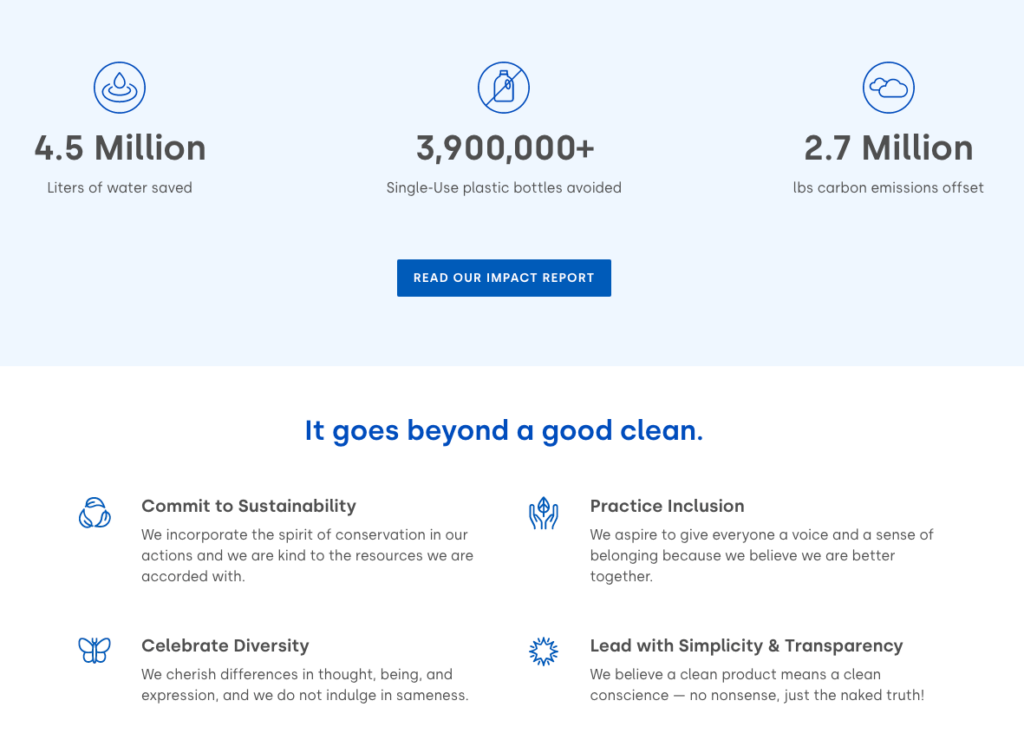
Caption + alt text
Crossrope features a section their About Us page titled “Crossrope cares,” describing a program dedicated giving back to marginalized groups and communities of color. On the page, they also highlight the organizations they support as well as the amount of cash and products they’ve donated.
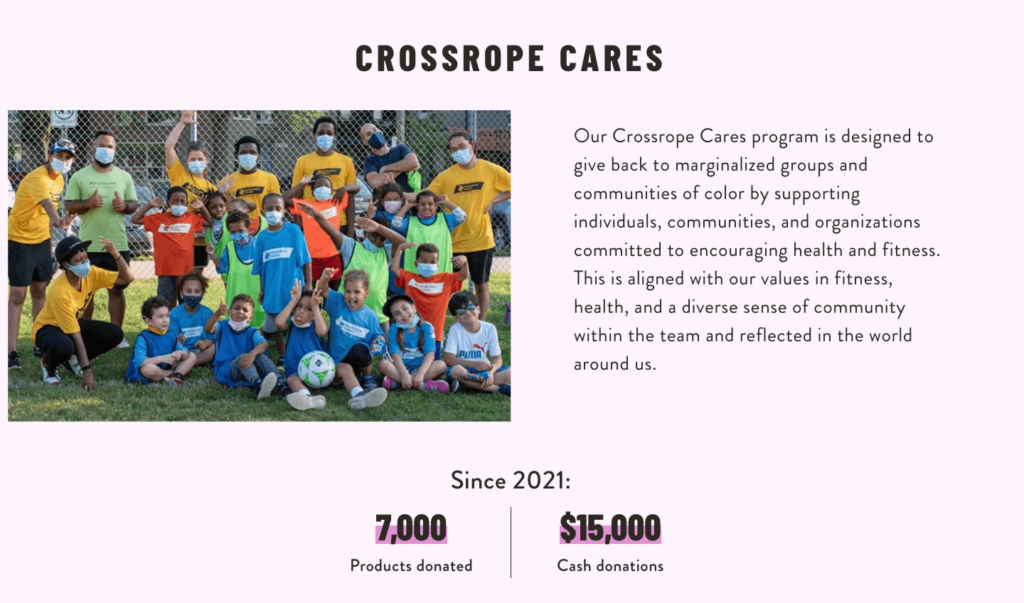
Blume highlights the charity they donate a portion of all proceeds to, Days for Girls, which has helped over 2.5 million girls worldwide with menstrual health solutions & education.
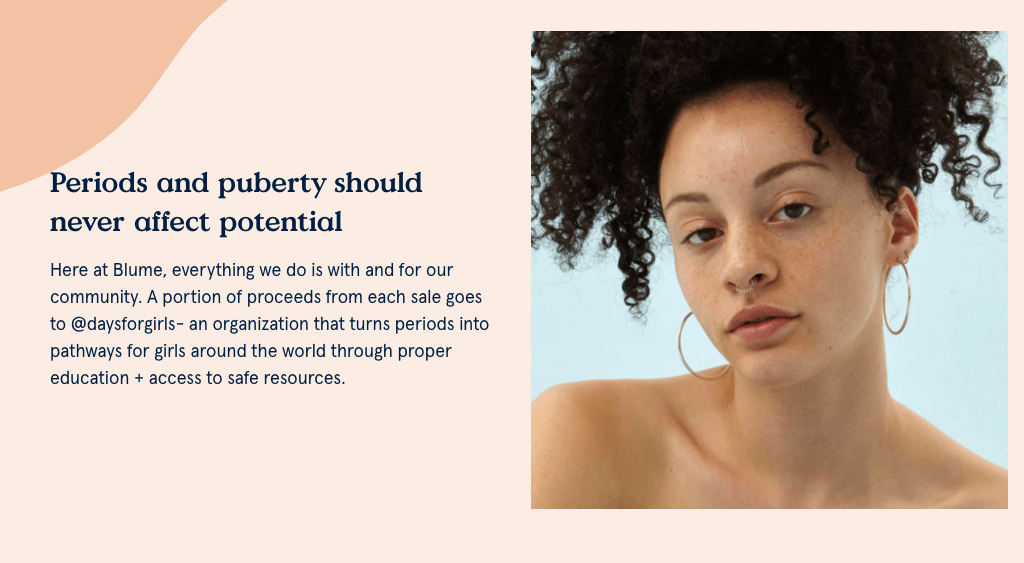
Caption + alt text
Connecting with your customers over what you care about is why they would choose you over your competitors. Consider that Gen Zers and millennials are willing to spend more on brands that prioritize sustainability because limiting the effects of climate change is one of their core values.
If you’re a brand that cares about environmental initiatives and isn’t letting your customers know that on your About Us page, you’re missing out on these shared connections (and potential conversions from site visitors).
Focus on connection, your story, and building brand credibility
Nailing the About Us page is key to letting your customers know why they should buy from your business as opposed to your competitors. You want the page design to flow from your customer’s perspective. One section should lead into the other, taking readers on a journey from your mission statement and your brand story to your personal connections and values that your customers can connect with.
Here are some other impactful ideas you can utilize on your About Us page:
- Use a Frequently Asked Questions section where you can get ahead of any common inquiries your customers might have about your brand and your products.
- Feature a selection of your top reviews or customer testimonials as provide social proof to entice new buyers.
- Highlight your company culture by sharing pictures of your team to give your customers a look behind the scenes.


